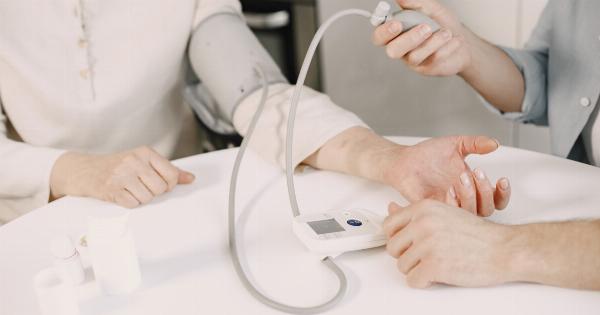High blood pressure is a common health issue that affects millions of people worldwide. It is a serious condition that can lead to other health problems like heart attack, stroke, and kidney disease if left untreated.
That is why it is essential to measure your blood pressure regularly to keep it under control.
Measuring your blood pressure is a quick and straightforward process that you can do at home or at the doctor’s office. In this step-by-step guide, we will show you how to measure your blood pressure accurately.
Step 1: Get a Blood Pressure Monitor
The first step in measuring your blood pressure is to have a blood pressure monitor. You can purchase a blood pressure monitor from a pharmacy or online store. There are two types of blood pressure monitors you can choose from:.
- Manual blood pressure monitor – This type of blood pressure monitor is operated by hand. It comes with an inflatable cuff, a stethoscope, and a dial gauge.
- Automatic blood pressure monitor – This type of blood pressure monitor is easy to use and requires no special training. It comes with an inflatable cuff, a digital display, and a battery-operated pump.
Step 2: Relax and Sit Comfortably
Before taking your blood pressure reading, take a few minutes to relax and sit comfortably. Sit in a chair with your back supported and your feet flat on the floor. Avoid crossing your legs or talking during the measurement.
Step 3: Wrap the Cuff Around Your Upper Arm
If you are using a manual blood pressure monitor:.
- Wrap the cuff around your upper arm, about one inch above the bend of your elbow.
- Make sure the cuff is snug but not too tight. You should be able to slip two fingers under the cuff.
- Position the stethoscope over the brachial artery in your elbow crease.
If you are using an automatic blood pressure monitor:.
- Wrap the cuff around your upper arm, about one inch above the bend of your elbow.
- Make sure the cuff is snug but not too tight. You should be able to slip two fingers under the cuff.
Step 4: Take Your Blood Pressure Reading
If you are using a manual blood pressure monitor:.
- Inflate the cuff by squeezing the bulb until the dial gauge reads about 160-180mmHg.
- Slowly release the pressure on the cuff by turning the valve counterclockwise.
- Listen for the first sound (systolic blood pressure) and note the reading on the dial gauge.
- Keep listening until the last sound disappears (diastolic blood pressure) and note the reading on the dial gauge.
If you are using an automatic blood pressure monitor:.
- Press the start button on the monitor.
- The cuff will automatically inflate and deflate.
- Wait for the monitor to display your blood pressure reading on the digital display.
Step 5: Record Your Blood Pressure Reading
After taking your blood pressure reading, record the two numbers (systolic and diastolic blood pressure) in millimeters of mercury (mmHg).
For example, if your reading is 120/80 mmHg, your systolic blood pressure is 120 mmHg, and your diastolic blood pressure is 80 mmHg.
It is essential to keep a record of your blood pressure readings over time. This will help you and your healthcare provider track any changes in your blood pressure and adjust your treatment plan if necessary.
Step 6: Repeat the Process
You can take your blood pressure readings multiple times a day or as recommended by your healthcare provider. It is best to take your readings at the same time each day for consistency.
If you have any concerns about your blood pressure readings, consult your healthcare provider. They may recommend additional testing or treatment options to help you manage your blood pressure effectively.
Conclusion
Measuring your blood pressure is a vital part of maintaining good health. Follow the steps outlined above to take accurate blood pressure readings at home or in the doctor’s office.
Keep a record of your readings and consult your healthcare provider if you have any concerns about your blood pressure.






























